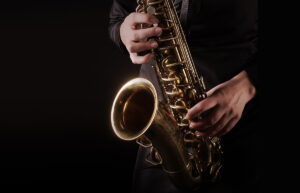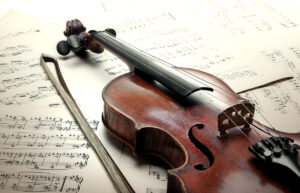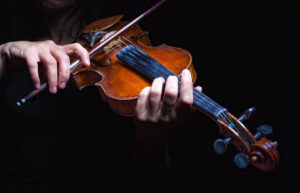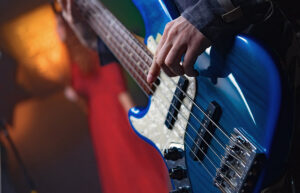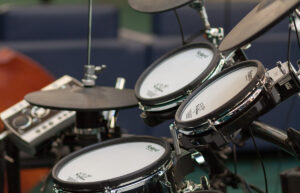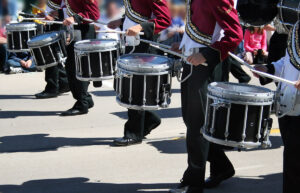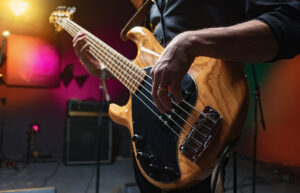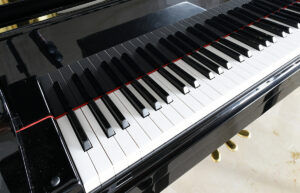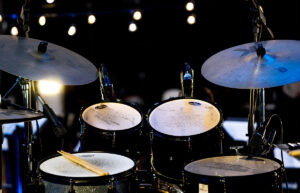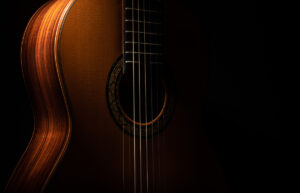Types of Steel Drums: Unveiling the Richness in Different Steel Drums

This comprehensive guide explores the diverse universe of ‘Types of Steel Drums.’ From the tenor steelpan’s soulful sounds to the cello pan’s rhythmic beats, join us as we uncover the details of the different types of steel drums, including their characteristics, size, range, suitable genre, and more.
Welcome to TheDemoStop, now join the community!
Connect with artists, fans and producers around the world.
What is a steel drum?
Originating from the vibrant musical culture of Trinidad and Tobago, a steel drum, or steelpan, stands out as a unique instrument made from a 55-gallon oil drum. The distinct and lively sound it produces is a crucial component of Caribbean music, finding prominence in genres like calypso and steelpan orchestras.
To create a steel drum, the metal undergoes a meticulous process that includes careful shaping, tempering, and tuning, ensuring that when struck with rubber-tipped mallets, it produces specific musical notes, contributing to the rich and diverse musical landscape of the region.
Types of steel drums
Tenor Pan (High & Low)

Description:
The Tenor Pan is a versatile instrument with a range that spans high and low pitches. It is often the lead voice in a steel band.
Characteristics:
Known for its melodic capabilities, the Tenor Pan is crucial for playing intricate and expressive musical lines.
Size and range:
- High Tenor Pan: Compact and featuring a smaller playing surface, the High Tenor Pan is designed for higher-pitched notes, contributing to the melodious top end of the steel pan range.
- Low Tenor Pan: Slightly larger than its high-pitched counterpart, it covers the lower end of the pitch spectrum, providing a rich foundation to steel pan ensembles.
Skill level:
- High Tenor Pan: Suitable for players across all skill levels, including beginners. Its smaller size and simpler layout make it accessible for those new to steelpan playing.
- Low Tenor Pan: Geared towards intermediate and advanced players due to its larger size and the need for more intricate playing techniques.
Genre and style:
- High Tenor Pan: Commonly found in calypso, soca, and Caribbean music genres, it adds sparkle and brightness to melodies, making it a staple in steel pan orchestras.
- Low Tenor Pan: Essential for providing the lower harmonic foundation in steel pan ensembles, the Low Tenor Pan is versatile and complements various musical styles, including jazz and world music.
Portability:
Both versions of the Tenor Pan are relatively portable, with the High Tenor Pan being more compact and lightweight.
Double Tenor Pan

Description:
The Double Tenor Pan, a dynamic member of the steel drum family, is a testament to the innovation and adaptability that defines the world of Caribbean steel pan music. It consists of two Tenor Drums played by a single musician. This setup allows for a broader range and richer harmonies.
Characteristics:
It offers an extended range compared to a single Tenor Pan, contributing to the complexity and depth of steel band arrangements.
Size and range:
The Double Tenor Pan features a dual playing surface, making it larger than a single-surface pan. Its size allows it to cover a wide tonal range, offering both mid and high-pitched notes for a diverse melodic expression.
Skill level:
The Double Tenor Pan best suits intermediate to advanced players and requires moderate skill.
Genre and style:
Commonly found in calypso, soca, jazz, and contemporary music, it adds a dynamic and expressive layer to traditional and modern musical compositions.
Portability:
While larger than a single-surface pan, the Double Tenor Pan remains relatively portable.
Welcome to TheDemoStop, now join the community!
Connect with artists, fans and producers around the world.
Double Seconds Pan

Description:
The Double Seconds Pan includes two drums tuned in unison, providing a harmonic accompaniment to the melody. It is often used for chordal and rhythmic support.
Characteristics:
It adds a layer of harmony and depth to the steel band’s sound.
Size and range:
Moderate size, the Double Seconds Pan typically features a dual playing surface with a mid-range pitch. It covers most middle and upper registers, offering a versatile tonal range.
Skill level:
Best suited for intermediate to advanced players, the Double Seconds Pan has a layout requiring a moderate skill level.
Genre and style:
The Double Seconds Pan is commonly found in calypso, soca, and other Caribbean music genres.
Portability:
While not as compact as some smaller steel pans, the Double Seconds Pan is still relatively portable.
Guitar Pan

Description:
The Guitar Pan is designed to mimic the tonal range of a traditional guitar. It contributes to the harmonic structure of the steel band.
Characteristics:
It plays a supportive role by providing chordal accompaniment, enhancing the overall musical texture.
Size and range:
The Guitar Pan is compact and designed with a similar shape to a guitar, making it easily recognizable. It typically covers a mid-range pitch with a melodic and expressive tonal range.
Skill level:
It is suited for players of various skill levels, including beginners and intermediate musicians. The layout and design offer a user-friendly experience, making it accessible to those new to steelpan playing.
Genre and style:
The Guitar Pan is versatile, lending itself to various genres such as calypso, reggae, pop, and folk. Its adaptability makes it an excellent choice for musicians exploring diverse musical styles.
Portability:
Its compact size and lightweight design make the Guitar Pan highly portable. It’s an excellent choice for musicians who value convenience and the ability to take their instrument on the go.
Cello Pan

Description:
The Cello Pan invites musicians to explore the rich depths of steel pan music, merging the soulful resonance of a cello with the vibrant and expressive qualities of the steel drum.
Characteristics:
Known for its warm and resonant tones, the Cello Pan provides a solid foundation in the lower register.
Size and range:
The Cello Pan is designed with a larger playing surface than traditional steel pans, resembling the size and shape of a cello. This lower-pitched instrument adds depth and richness to the steel band’s ensemble. It complements the higher-pitched instruments.
Skill level:
Geared towards intermediate to advanced players, the Cello Pan demands a higher skill level due to its larger size and complex layout. It uniquely challenges seasoned steelpan enthusiasts seeking a deeper, more nuanced playing experience.
Genre and style:
With its deep and soulful tones, the Cello Pan is well-suited for genres that benefit from a lower register, such as classical, jazz, and world music. Its expressive capabilities make it a versatile choice for musicians exploring a range of musical styles.
Portability:
While larger than traditional steel pans, the Cello Pan remains portable compared to its acoustic cello counterpart.
Bass Pan

Description:
The Bass Pan is the lowest-pitched instrument among the steel pans and is responsible for providing a powerful and rhythmic foundation.
Characteristics:
It emphasizes the low-end frequencies, creating a strong rhythmic pulse and enhancing the overall groove of the music.
Size and range:
The Bass Pan is characterized by its large size, featuring an expansive playing surface that covers the deep, resonant bass range.
Skill level:
Geared towards intermediate to advanced players, the Bass Pan requires a higher skill level due to its size and the need for precise playing techniques.
Genre and style:
Integral to Caribbean music, the Bass Pan provides the essential low-frequency backbone in genres like calypso and soca. Its deep, rumbling tones make it a valuable addition to jazz, world music, and contemporary ensembles.
Portability:
While larger and less portable than higher-pitched steel pans, the Bass Pan is still manageable for transportation. Its significant size and weight make it a stationary instrument, often placed on a stand for performances.
Welcome to TheDemoStop, now join the community!
Connect with artists, fans and producers around the world.
Quadrophonics Pan

Description:
The Quadrophonics Pan is an innovative steel drum with a unique twist to traditional steel pan ensembles. It is a set of four drums that cover a broad tonal spectrum. It combines elements of different pans to achieve a versatile sound.
Characteristics:
It offers diverse tones, allowing for intricate and dynamic musical arrangements.
Size and range:
The Quadrophonics Pan features four playing surfaces arranged in a square configuration. Each quadrant covers a distinct pitch range, allowing for a diverse and expansive tonal spectrum.
Skill level:
Made for advanced players, the Quadrophonics Pan requires a higher skill level due to its complex layout and the need for precise coordination.
Genre and style:
Versatile in its capabilities, the Quadrophonics Pan is suitable for various genres and styles, including jazz, fusion, and experimental genres.
Portability:
While larger and more intricate than traditional steel pans, the Quadrophonics Pan remains somewhat transportable. However, its size and complexity may make it less portable than single-surface steel pans.
Lead Pan

Description:
The Lead Pan is the primary melody instrument in a steel band, carrying the main musical theme.
Characteristics:
Known for its expressive capabilities, the Lead Pan is often featured in solos and is essential for defining the overall musical identity.
Size and range:
Lead Pans come in various sizes, each contributing to a specific range of pitches. The larger the pan, the lower the pitch it produces. This allows for diverse tones and melodies within a steelpan ensemble.
Skill level:
Suitable for players of various skill levels, including beginners and intermediate musicians.
Genre and style:
Initially rooted in Trinidad and Tobago, steel pans are deeply connected to Caribbean music, particularly calypso and steel pan orchestras. However, their versatility has allowed them to transcend these origins, appearing in various genres, from jazz and classical to pop and even rock.
Portability:
Compact and lightweight, the Lead Pan is highly portable, making it convenient for musicians who value ease of transportation.
FAQs
What is a steel drum?
A steel drum, or a steelpan, is a musical instrument from Trinidad and Tobago. It is made from a metal oil drum or similar container, and the playing surface is divided into concave sections of different sizes.
What are steel drums called?
Steel drums are commonly referred to as steel pans. These musical instruments, originating from Trinidad and Tobago, are crafted from 55-gallon oil drums and play a pivotal role in Caribbean music genres such as calypso and steelpan orchestras.
What are the different types of steel drums?
The different types of steel pans are as follows:
- Tenor Pan (High & Low)
- Double Tenor Pan
- Double Seconds Pan
- Guitar Pan
- Cello Pan
- Bass Pan
- Quadrophonics Pan
- Lead Pan
How many types of steel drums are there?
There is a diverse array of steel drums, encompassing Lead Pans, Double Tenors, Double Seconds, Guitars, Bass Pans, and more. Each type offers unique characteristics, playing surfaces, and tonal ranges, contributing to the rich and varied landscape of steel pan music.
What is the most common steel drum?
The most common type of steel drum is the Lead Pan.
What are Caribbean steel drums called?
Caribbean steel drums are often simply called “steel drums” or “steel pans.”
What is the hardest steel pan to play?
Due to its complex arrangements and challenging techniques, the Tenor Pan is often considered the hardest steel pan to play.
What is special about steel drums?
Steel drums are special because they are the only family of chromatic instruments invented in the 20th century. They originated in Trinidad and Tobago and are crafted from repurposed oil barrels, producing unique and vibrant sounds in various musical genres.




